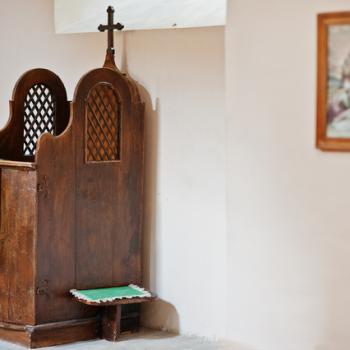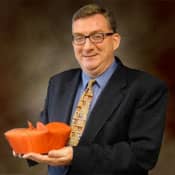Her father begged her not to go. "They're not going to like you," Dr. Theon Bowman told his fifteen-year-old daughter Bertha. But she'd already made up her mind. It was the summer of 1953, and she was leaving Canton, Mississippi, for La Crosse, Wisconsin, where she was going to become a nun in a homogeneously white religious community. And, she added, "I'm going to make them love me."
She took the name Thea, meaning "of God." During her fifty-two years, she became one of Catholic America's most beloved figures: teacher, preacher, activist, musician, celebrator of African-American Catholicism. She inspired and enabled countless numbers to understand the true meaning of the word "Catholic." As Mike Leach writes, "Everybody wanted to be near Thea Bowman." Her joy was contagious.
She was tough, too. "I learned survival," she told an interviewer. "I'm from Mississippi." The granddaughter of slaves, she grew up in the Jim Crow South, where segregation was "an invulnerable tradition." But she learned important lessons at home. Her father, a doctor, was "really dedicated to trying to help people, and I grew up with that example." From her mother, a teacher, she learned to rise above hatred. "Returning insults," she learned, "only makes you small like they are."
When Thea was ten, the Franciscan Sisters of Perpetual Adoration started teaching in Canton. Her parents enrolled her in their school, and soon she became interested in Catholicism. What attracted her most were the Sisters and how they put their faith into action. When she told her parents she wanted to become a Catholic, they initially disapproved, until it was clear that she had made up her mind.
She went by herself to the local parish, where she discovered that Catholics were as racist as everybody else. Sitting in an upper pew, she recalled, a kindly old lady suggested she move back. The lady herself wouldn't mind, she said, "but the others might not like it, and after all, they had been nice enough to buy a whole black pew just for the colored folks who came to their church to greet the Lord." Still Thea was undeterred. In fact, she decided to join the Sisters.
And she did. For nearly a decade she studied and taught in La Crosse, until the opportunity came to return home. In 1961, as Canton's first African-American nun, she taught at her alma mater before heading for doctoral studies at Catholic University. In 1966 she helped found a national organization for African-American nuns. She also began to reflect on her African heritage more closely:
My people have been a loving people, and I'm proud of that. We've been a people of song and story. We survived oppression, and we're still trying to survive, and still trying to keep on keeping on. I like being Black. I have friends who are white and brown and yellow and red, and all the colors in between. And I love my friends. I love to be with them. I love to share with them. But I l like being myself, and I thank God for making me my Black self.
Thea believed that when people rediscovered their own heritage, it enabled them to better appreciate other traditions. This was the real meaning of the word Catholic, "universal." As a Franciscan, one biographer notes, she was committed to being "a bridge of understanding and a peacemaker among the various cultures." In a 1980s interview she said: "I can introduce my Black friends to my Hispanic friends, to my Asian friends, to my Anglo friends. I can be the bridge over troubled water."
After receiving her doctorate in English (her dissertation was on fellow Mississippian William Faulkner), Thea taught college for several years until the opportunity came to return home. Concerned about her parents' health, she was staying with them when Bishop John Brunini asked her to head the Jackson Diocese's Office of Intercultural Affairs. As musician, author, and speaker, she took a leading role in the Black Catholic community. She had the special gift of being able to meet people on their own terms.
Nineteen-eighty-four proved to be an especially tough year for Thea, as both her parents died and she herself was diagnosed with breast cancer. "Let me live until I die!" was her motto. She continued to speak (and sing) nationwide. Perhaps the climax of her career came in 1989, when she addressed the American Bishops from her wheelchair. Beginning with a song, she challenged her "brother bishops" to live up to their own words and lead others to rediscover what it means to be "truly Catholic."
On a Friday morning, March 30, 1990, Sister Thea Bowman died peacefully in her childhood home. Viterbo College in La Crosse, where she taught, rang its bells fifty-two times for each year of her life. Thea's gift for bringing people together was never more evident than at her funeral Mass. Assessing her own legacy, she had written:
I think the difference between me and some people is that I'm content to do my little bit. Sometimes people think they have to do big things in order to make change. But if each one would light a candle we'd have a tremendous light.
"I can't preach in the church," Thea had noted; so she preached on the streets, in the neighborhood, the home, the family. While Catholics celebrated their respective gifts, they also had a responsibility to bridge differences. "I don't think it starts in church," she said, but "when we can love one another, when we become friends. Then we can walk hand in hand into the house of the Lord and pray together." Not trying to bridge those gaps, she said, was "sacrilege."
Thea Bowman, builder of bridges, bridger of gaps, channel of God's peace, pray for us!
Watch Sister Thea Bowman's 1989 speech to the American Bishops.
12/2/2022 9:05:40 PM





